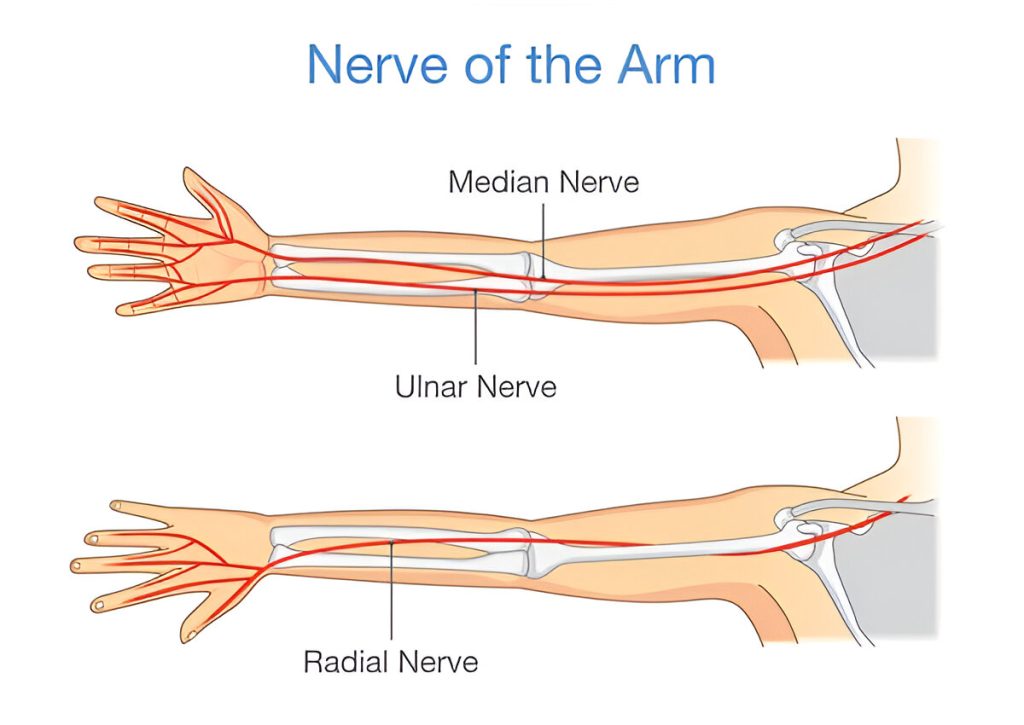What Is Radial Tunnel Syndrome?
Radial Tunnel Syndrome occurs when the radial nerve is compressed as it passes through a narrow tunnel in the upper forearm, near the elbow joint. This tunnel, known as the radial tunnel, is formed by muscles, tendons, and bone.
Unlike other nerve entrapment syndromes, radial tunnel syndrome is characterized by deep aching pain in the forearm rather than tingling or numbness, making it easily confused with lateral epicondylitis (tennis elbow).
Causes and Risk Factors
-
Repetitive wrist extension and forearm rotation, especially in activities like throwing, hammering, or prolonged computer use
-
Direct trauma to the outside of the elbow
-
Muscle hypertrophy or scarring near the supinator muscle
-
Occupations involving repetitive motion, such as mechanics or assembly-line workers
-
Prior elbow injury or surgery
Symptoms
-
Dull, aching pain over the lateral forearm, about 2–4 cm below the lateral epicondyle
-
Pain that worsens with forearm rotation, wrist extension, or lifting objects
-
Tenderness over the radial tunnel
-
Weakness or fatigue with gripping, despite preserved muscle strength
-
Unlike other nerve conditions, numbness or tingling is typically absent
Diagnosis
-
Clinical examination to differentiate from tennis elbow
-
Palpation to identify point tenderness over the radial tunnel
-
Provocative tests:
-
Resisted supination test
-
Middle finger extension test (Maudsley’s test)
-
-
Nerve conduction studies and EMG may help rule out other nerve disorders
-
MRI or ultrasound used to identify structural compression or muscle enlargement
Treatment
Non-Surgical Treatment
-
First-line approach for most patients
-
Involves:
-
Activity modification
-
Wrist splinting
-
NSAIDs
-
Stretching and strengthening exercises
-
Ergonomic adjustments in the workplace
-
Occasionally, corticosteroid injections may provide relief, although their long-term effectiveness is debated
-
Surgical Treatment
-
Considered for patients with persistent pain lasting over 6 months despite conservative care
-
Involves radial tunnel decompression, where fibrous bands compressing the nerve are released
-
Outpatient procedure with relatively low complication risk
Recovery Outlook
-
Most patients respond well to conservative treatment within 3 to 6 months
-
Surgical patients typically return to normal activities in 4 to 8 weeks, with full recovery by 3 to 4 months
-
Early diagnosis and proper treatment significantly improve outcomes
Why Kerlan Jobe Institute?
The team at Kerlan Jobe Institute provides expert diagnosis and personalized care for radial tunnel syndrome, helping patients differentiate it from similar conditions like tennis elbow and ensuring the most effective treatment is delivered.

